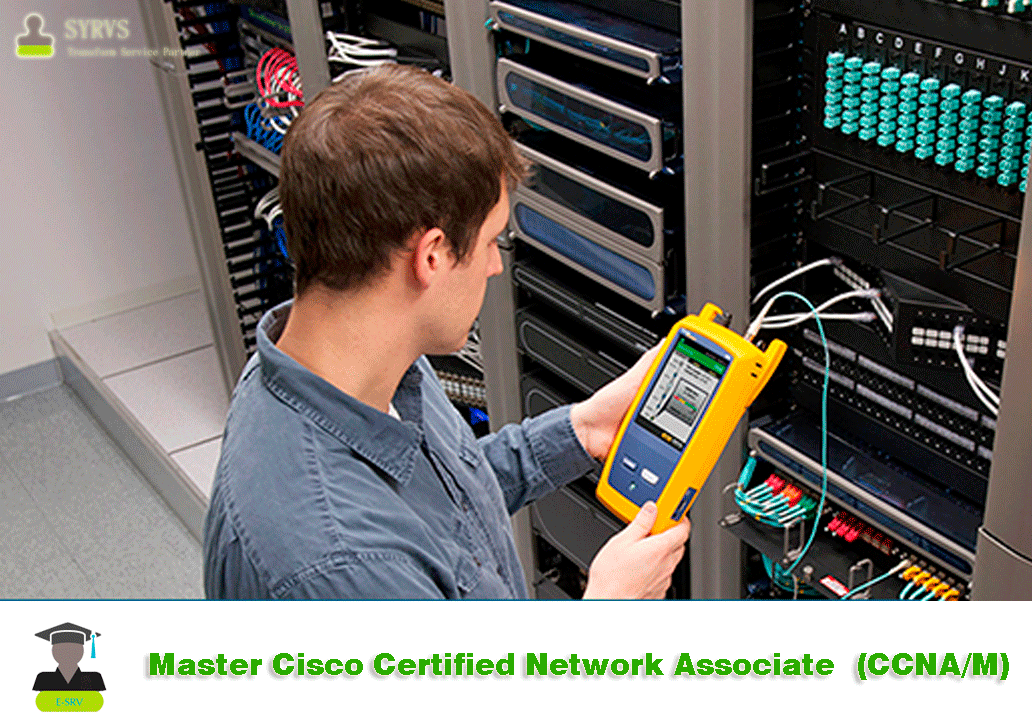The knowledge and skills that a learner must have before attending this course are as follows:
- Basic computer literacy
- Basic Microsoft Windows navigation skills
- Basic Internet usage skills
Upon completing this course, you will be able to meet these objectives:
- Install, operate, and troubleshoot a medium-sized network, including connecting to a WAN and implementing network security
- Describe the effects of new technologies such as IoE, IoT, IWAN, and SDN on network evolution
After The CCNA curriculum includes a third course, Interconnecting Cisco Networking Devices: Master (CCNAM), a derivative works course consisting ICND1 and ICND2 content in its entirety, but with the content merged into a single course. Overlapping content between ICND1 and ICND2 is eliminated and content is rearranged for the purpose of the course flow.
it is an instructor-led training course that teaches learners how to install, operate, configure, and verify a basic IPv4 and IPv6 network, including configuring a LAN switch, configuring an IP router, connecting to a WAN, and identifying basic security threats. Also covers topics in more depth and teaches learners how to perform basic troubleshooting steps in enterprise branch office networks, preparing learners for Cisco CCNA certification
The course contains these components:
- Building a simple network
- Establishing Internet Connectivity
- Summary Challenge
- Implementing Scalable Medium Sized Network
- Introducing IPv6
- Troubleshooting Basic Connectivity
- Implementing Network Device Security
- Implementing an EIGRP-Based Solution
- Implement a Scalable OSPF-Based Solution
- Implementing Wide-Area Networks
- Network Device Management
Module 1: Introduction to Networks
introduces the architecture, structure, functions, components, and models of the Internet and other computer networks. The principles and structure of IP addressing and the fundamentals of Ethernet concepts, media, and operations are introduced to provide a foundation for the curriculum. By the end of the course, students will be able to build simple LANs, perform basic configurations for routers and switches, and implement IP addressing schemes.Module 2: Switched Networks
describes the architecture, components, and operations of switches in a network. Students learn how to configure a switch for basic functionality.Module 5: Connecting Networks
discusses the WAN technologies and network services required by converged applications in a complex network. The course enables students to understand the selection criteria of network devices and WAN technologies to meet network requirements. Students learn how to configure and troubleshoot network devices and resolve common issues with data link protocols. Students will also develop the knowledge and skills needed to implement IPSec and virtual private network (VPN) operations in a complex network.
Chapter 1: Hierarchical Network Design
Chapter 2: Connecting to the WAN
Chapter 3: Point-to-Point Connections
Chapter 4: Frame Relay
Chapter 5: Network Address Translation for IPv4
Chapter 6: Broadband Solutions
Chapter 7: Securing Site-to-Site Connectivity
Chapter 8: Monitoring the Network
Chapter 9: Troubleshooting the Network

